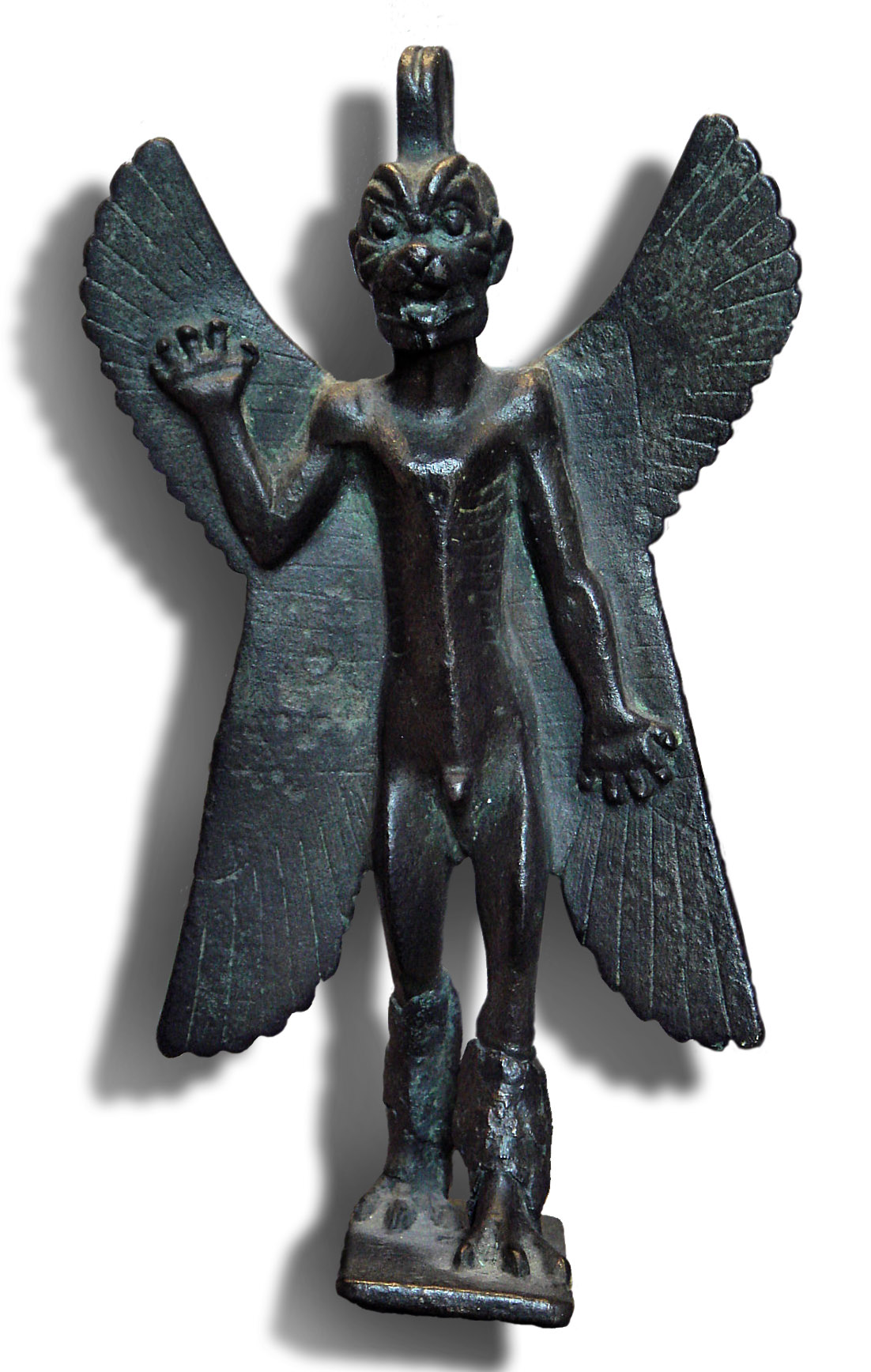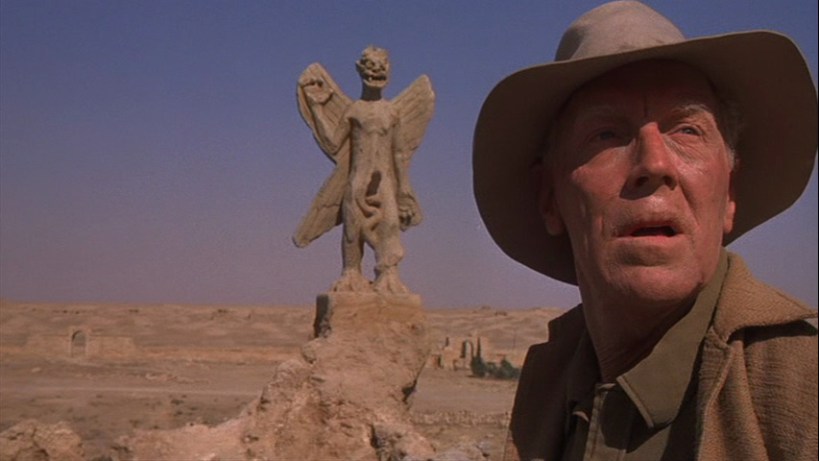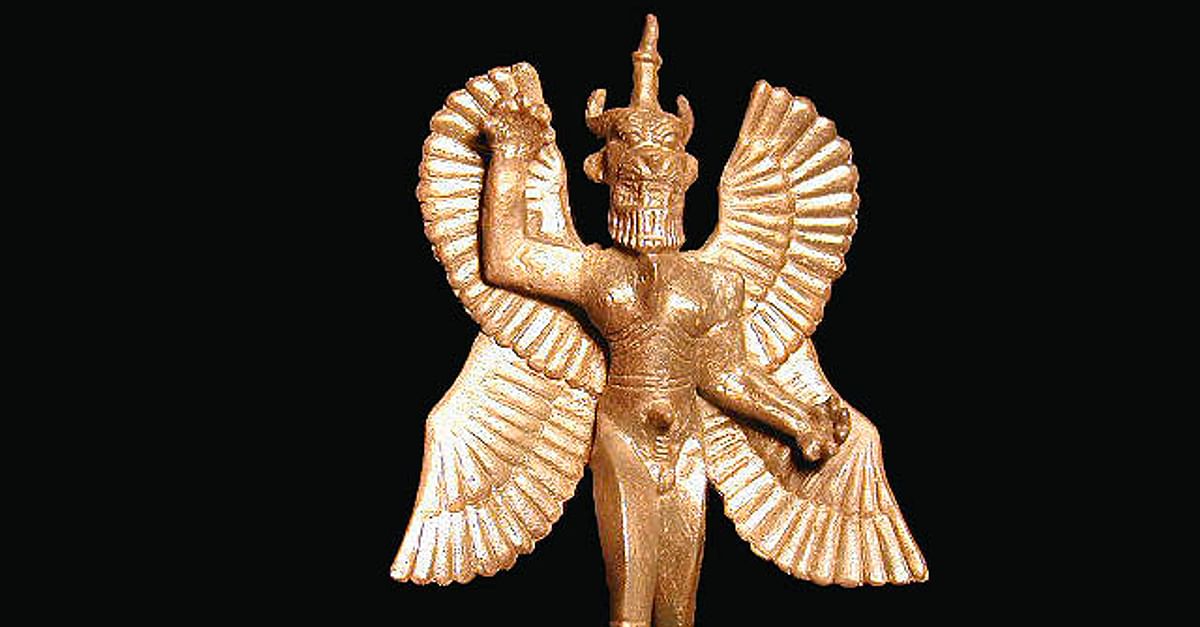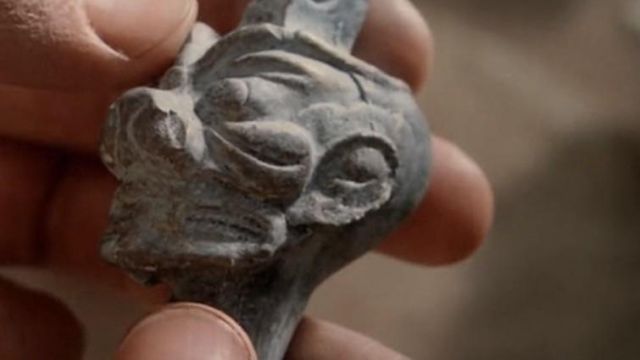Because of all the legend and frightening stories that surround the movie and everything that happens in it, many people have experienced nightmares, jump scares, and impromptu surges in faith in God after watching the timeless horror classic The Exorcist.
Everyone is scared of the Devil in the movie because they think he might suddenly appear and take possession of the person sitting next to them. But that is all there is. The Devil was not the movie’s villain. The Devil was not even present, in fact! Pazuzu, an eldritch demon of the abyss, served as the true antagonist.
While the movie depicts this demon in passing, history and folklore indicate otherwise. Pazuzu was regarded as one of the Mesopotamian civilization’s coldest, most calculating bad demons with control over the sky.
By seducing the people into doing wrong and then condemning them to perpetual misery in the Great Abyss, he massacred the populace. The history of Pazuzu, the legend surrounding the Prince of Demons, his contemporary devotees, and the historically renowned Amulet of Pazuzu discovered in the Sumerian literature are all covered in this film. Shall we get started?
Who Is Pazuzu?

Pazuzu is first introduced to the world through the cult classic The Exorcist. When little Reagan claims to be possessed “by the Devil himself”, a priest is called, who brushes it off as a psychological case. However, when things get real ugly real fast, they call in the big leagues – a senior priest who we see unearthing a demon’s sculpture in Hatra, Iraq. And people are still surprised that they get possessed.
I mean, why would you even unearth something that’s CLEARLY meant to be six feet under? You’re practically inviting trouble. The sculpture they dig out is Pazuzu – a demonic creature with a beast’s head, wings, a human body, scorpion tail, and snake-shaped genitalia. In the book upon which the film is set, William Blatty draws the creature and doesn’t refer to it by name but as Captain Howdy, giving it Catholic iconography. Pazuzu was also seen in the film’s sequels, Heretic, Legion, and prequels The Beginning and Dominion. Pazuzu also made his TV debut in the Exorcist TV series by Fox.
Pazuzu was also noticed by horror fans in the trailer of the movie Godzilla: King of the Monsters. While there is no feedback on whether it was a reference to Pazuzu or just another solid piece for backstory accuracy, Exorcist fans were happy to see Pazuzu’s glimpse in another horror film.
Is it based on a true story?

Yes, and no. The movie & book shows a young girl named Reagan who gets severely possessed after using an Ouija board. Then priests try to exorcise her after realizing she was actually possessed and wasn’t faking it because of mental illnesses. The possession part did happen to a fourteen-year-old boy in 1949, who was given an Ouija board by his spiritualist aunt.
Robbie Mannheim, who went by the pseudonym Roland Doe, was subject to exorcisms by the Roman Catholic church at the time, who deemed it necessary considering the brevity of the situation. Still, eventually, the case was revealed to be one involving emotional & mental disturbances. However, there was no mention or instance of Pazuzu being involved in this matter; Blatty added this twist to his book after seeing Pazuzu’s statue on a trip to Iraq.
Pazuzu’s Mythology

Considered the Dark Angel of the Four Winds in 8th-century Neo-Assyrian & Neo-Babylonian mythology, Pazuzu was said to control the west & south-west winds that brought famine during the summers and locusts during monsoon. He was generally considered to be the Prince of demons.
Son of the Babylonian God of all evil Hanbi, and brother of Humbaba from The Epic of Gilgamesh, he is the only Mesopotamian demon known to be portrayed in films. A win for Mesopotamian representation in Hollywood, I guess. Sumerian mythology regards Pazuzu as one of the demons with a good side. Surprising, I know. That’s why people would wear his visage to ward off evil spirits. Mesopotamian people also had a classic Christian take on their downfall – in this case, “Pazuzu giveth and Pazuzu taketh away.” That’s why when Pazuzu was blamed for the widespread epidemic of malaria and typhoid, people prayed to, you guessed it, Pazuzu.
While Pazuzu’s origins have been muddled over time, he was said to wield a great magical sword against other evils. But Christian mythology overruled his good side and regarded him as Satan’s second-in-command who conspired to overthrow God’s reign but was cast out alongside Lucifer and turned into a demon. Pazuzu was said to be one of the twelve obyriths or eldritch demons, predating the Abyss itself. That’s why the first layer of Abyss is known as Pazunia, in his honor. Some texts suggest Pazuzu may have even created the Great Abyss. Pazuzu, 1. Satan, 0.
The Amulet of Pazuzu

The Amulet of Pazuzu was a way to invoke the protection of the demon prince upon the people, contrary to popular belief from the movie The Exorcist, where watchers claimed Pazuzu was in the amulet that the priest excavated from the Mesopotamian ruins. People made small figurines and amulets with his picture and suspended them from a string that they used as a talisman and a way to call upon Pazuzu.
They did these to receive his favor. However, it must be noted that the Sumerians refrained from making giant statues of Pazuzu to avoid receiving too much attention from the menacing corrupting God. It was small enough to receive protection but not large enough for him to cause havoc. See, even the Sumerians knew that too much of anything wasn’t good. Despite being a sky demon, he had a soft corner for pregnant women and newborns, who his ex-wife, the demoness Lamashtu ironically loathed.
Lamashtu was said to feast upon unborn infants and cause the death of pregnant women, so people placed the amulets on expecting mothers and young children to ward off Lamashtu. She was said to do this as revenge for Pazuzu’s punishment for her. When they were lovers, Lamashtu betrayed Pazuzu, and he banished her to Torremor, the 503rd layer of Abyss, after blinding her. Talk about crazy ex behavior.
Pazuzu’s Followers

We know about Mesopotamia being awestruck with Pazuzu but what about the modern times? Allow me to indulge you with a tale of Pazuzu Algarad. Born John Alexander Lawson, this North Carolina guy showed signs of some mental illness from very early on: the classic substance use and killing animals for its fun. He was diagnosed as schizophrenic and agoraphobic, but his mother couldn’t afford his treatment for long, causing him to go downhill pretty drastically.
He watched The Exorcist and got obsessed with Pazuzu so much that he legally changed his name to Pazuzu Illah Algarad, inked his entire face, filed his teeth to fangs, resorted to bathing once a year and brushing, never. Psychiatrists suggest that his act of ostracization may be in rebellion against the town’s heavy Christian environment.
Much like the infamous Charles Manson, he had a way of wooing people into doing his dirty work and even got two women to be betrothed to him; we shall never know how on earth he did that. They, and other people, frequented his house to drink bird blood, have orgies, sacrifice rabbits, and abuse drugs. Upon investigation, Satanic text was printed all over the walls. While both fiancées received sentences, Algarad killed himself in custody before acquiring one.
Pazuzu, however, did have ancient followers as well. Some of them are – Kenku, harpies, gargoyles, manticores, wyverns, fey, as well as dragons. As the pattern suggests, his followers were primarily avian hybrid evil beings who, unsurprisingly, sought the good graces of the ultimate sky demon of all time.
So, there you go. That’s everything you’ll need to know about the real antagonist of the Exorcist films. If anyone tells you otherwise, you have this video to prove them wrong. Just don’t accidentally call out Pazuzu’s name three times, or he may pop up in front of you, dare or no dare. I’m kidding, but why take the risk? You’ve seen enough horror movies to know where and how it goes wrong. You’re smarter than that. But, in case you don’t know where and how it goes wrong, check out our other videos on famous cult classics and horror flicks.
